No products in the cart.
The Environmental Cost of Overpackaging: How to Reduce Waste Without Compromising Protection
What is Over Packaging in Online Shopping?
As the name implies, over packaging refers to using an excessive amount of packaging material, often plastic packaging or plastic containers, that exceed what's necessary for a product's protection, transportation, and sale. Some real-world examples of excess packaging include receiving a small item in a larger container, individually wrapped produce items (particularly items like bananas and oranges), or items that are double boxed (i.e., the product has its own box, but then that is then put into another box or plastic bag for shipping.)

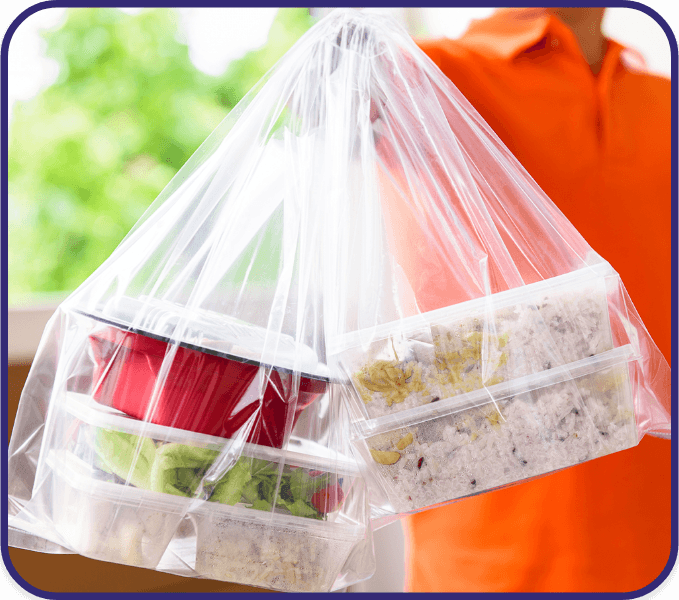
Over packaging and plastic waste is very common in e-commerce and the food industry. In e-commerce, products that are shipped typically undergo more handling than those sold in traditional retail settings. They may also over package with plastic packaging in an effort to improve customer experience and reduce the number of returns, but in reality this has a negative impact on their carbon footprint and global warming. In the food industry, pre-packaged foods offer more convenience and, in some cases, over packaging can be perceived as more hygienic.
In this blog, we'll discuss how excessive packaging and using unnecessary materials throughout the online shopping experience has become a huge problem for the environment, and how brands can reduce packaging waste without negatively impacting the experience of their customers.
Why Excessive Packaging Hurts More Than Helps
Excessive packaging and plastic waste can have a negative impact on the environment and consumer perception. If you're interested in reducing overpackaging and packaging waste, these are two areas where you'll benefit most: looking at its environmental impact and how consumers view you.
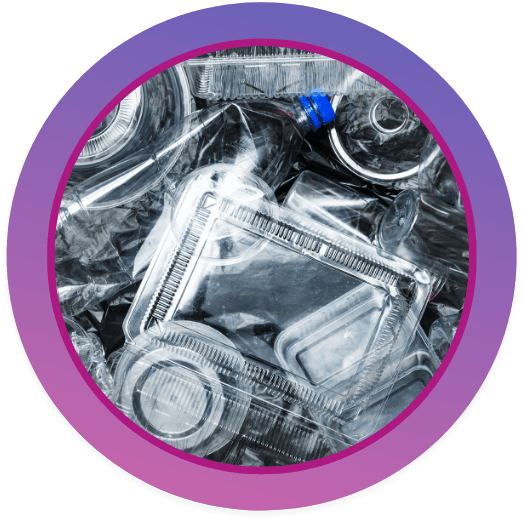
Environmental Impact
Excessive packaging has a huge environmental impact. From the carbon dioxide emissions and the transportation costs involved with manufacturing and shipping it, to the fact that single use plastics contribute significantly to landfill waste, there are several factors at play when it comes to excess packaging and how it impacts the natural environment. Plastic packaging, in particular, is a major source of pollution in oceans, waterways, and soil, negatively impacting marine animals, and the transportation costs/carbon footprint of shipping increases with the weight of shipments.

Consumer Perception
In a society where natural resources are protected and consumers prefer paper based packaging over heavier plastic packaging, companies and retailers that over package and contribute to packaging waste can be seen as being careless or outdated. A growing number of consumers prefer to buy products from retailers that use sustainable packaging materials, and some are willing to switch to companies that offer eco-friendly options or use recyclable materials.
The growing environmental concern regarding excessive packaging is shaping consumer preferences and driving the demand for more sustainable packaging solutions. From using biodegradable packaging materials to defaulting to paper packaging or recyclable materials, there are several things companies and retailers of all sizes can do now to reduce their carbon footprint and protect the environment.
How to Reduce Packaging Waste Without Sacrificing Consumer Experience
When switching to new sustainable packaging materials or environmentally friendly products, it's normal for brands to be concerned about how it will impact the customer experience. Yes, reducing plastic pollution and protecting natural resources is good, but the last thing you want to do is switch to more sustainable choices and have it negatively impact our customers to the point where they abandon your brand that same year.
Below, we'll provide some sustainable packaging design options for your to consider as you make the move towards reducing plastic pollution.
Use custom-sized packaging - Not only does using custom-sized packaging reduce packaging waste, but it can also minimize movement during transit, reducing the risk of damage or the need for bulky bubble wrap. While there may be an initial investment in this type of custom packaging design, the long-term savings from reduced material and shipping costs can be substantial. Think of this switch as an investment in the future of your company. Minimalist packaging is the new norm and this is a great way to avoid excess packaging.
Switch to lightweight flexible materials throughout the supply chain - Switching to lightweight, flexible packaging materials can significantly reduce costs, improve sustainability, and enhance consumer convenience. Flexible packaging, like pouches, bags, and wraps, offers numerous benefits over traditional rigid packaging or individually wrapped options. Lightweight flexible packaging is also incredibly versatile. It can be used as the primary packaging for many items, including food items, beverages, personal care items, and household goods. Depending on the material, it can also be reused, effectively avoiding single use plastics.
Combine branding and function in one layer - Have you ever had to remove a plastic layer (or even multiple layers!) before you were even able to get to the actual product packaging? Why make your customers open multiple layers of packaging when you can combine them into one? The packaging provider you work with should eventually determine if this type of packaging makes sense for you, but given its environmental impact, it is certainly worth considering. Cut back on the excessive use of plastic packaging wherever you can -- your customers and the environment will thank you!
Reevaluate inner packaging needs - While inner packaging plays a crucial role in protecting products during transit, many companies overdo it. Instead of wrapping fragile items in layers and layers of individually wrapped plastic packaging or bulky bubble wrap, opt for eco-friendly air pillows or biodegradable packing peanuts. Evaluate opportunities to reduce the amount of packaging material, and choose sustainable alternatives to traditional plastic packaging. Strive for packaging solutions that support a circular economy.
Choose barrier films with sustainable attributes - Choosing the right sustainable barrier film involves balancing performance with environmental responsibility. Choose recyclable barrier films (like PE barrier films or PET packaging), compostable barrier films (bio-based polymers, packaging made out of cornstarch), or bio-based barrier films (cellulose, natural fibers). The best choice depends on the specific product, barrier requirements, desired shelf-life, and end-of-life infrastructure, but a professional packaging supplier can help you choose the film, biodegradable materials, and eco-friendly option that's right for you.
The Role of Smart Design in Sustainable Packaging
Good packaging design plays a critical role in reducing waste and protecting our natural resources. The right packaging can balance aesthetic appeal with its environmental impact, resulting in positive outcomes for both the business and the consumer. Case studies of the global economy show that consumers prefer companies that care about being eco-friendly. Here's how good packaging can enhance your success:
By strategically integrating these elements, good packaging design elevates the overall customer experience, enhances brand value, and ensures product integrity throughout the online shopping journey.
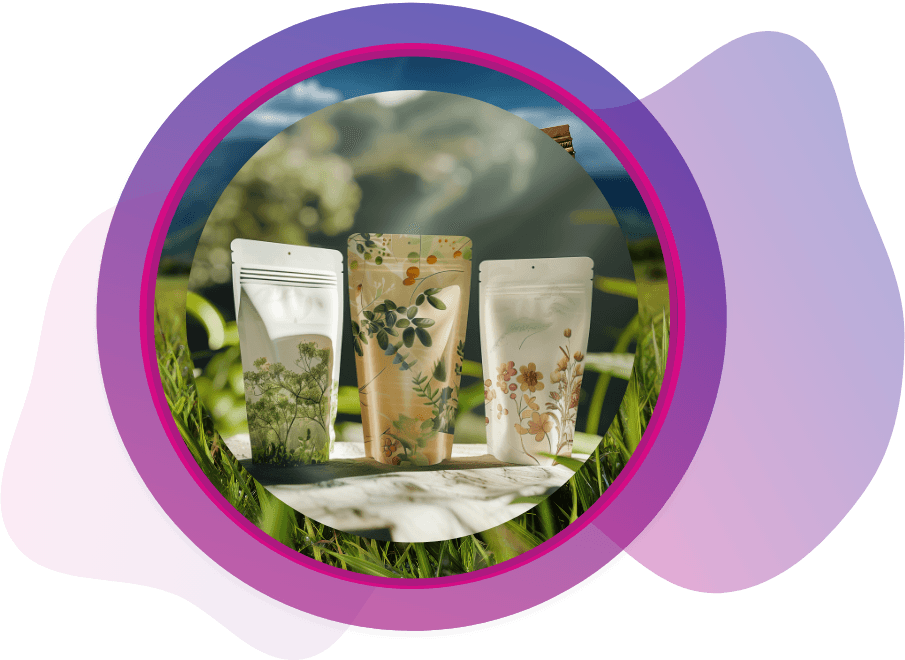
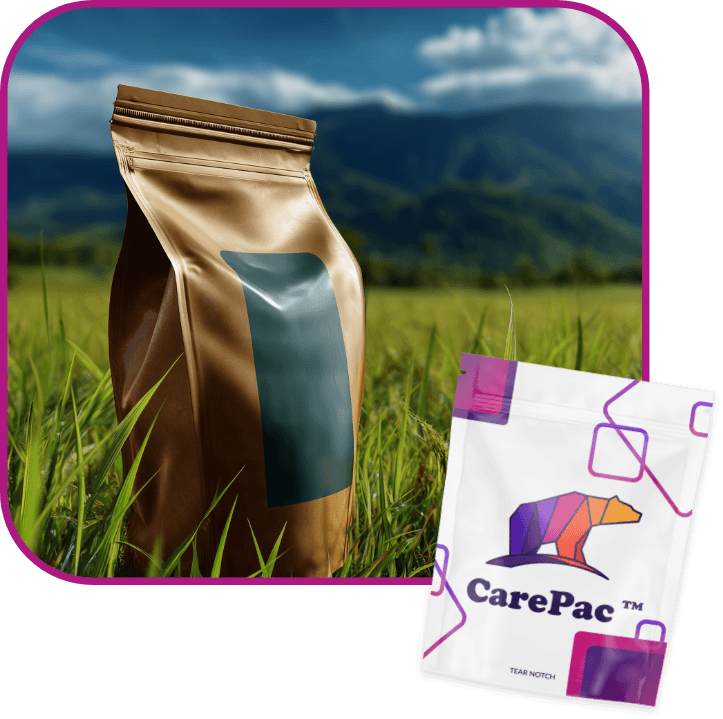
Work With CarePac to Reduce Waste and Costs
CarePac helps create packaging that enhances brands, protects products, and meets market demands, including those outlines by the Environmental Protection Agency. We offer fully customized options that can enhance your consumer's online shopping experience and are proud to offer several sustainable and biodegradable material options. We're big fans of minimalist packaging and can help you avoid unnecessary materials in your packaging.
Ready to get started with reducing plastic waste? We can help. Contact us today to get started.
Lets Get Started

Made In
The USA

Full Pouch
Customization


